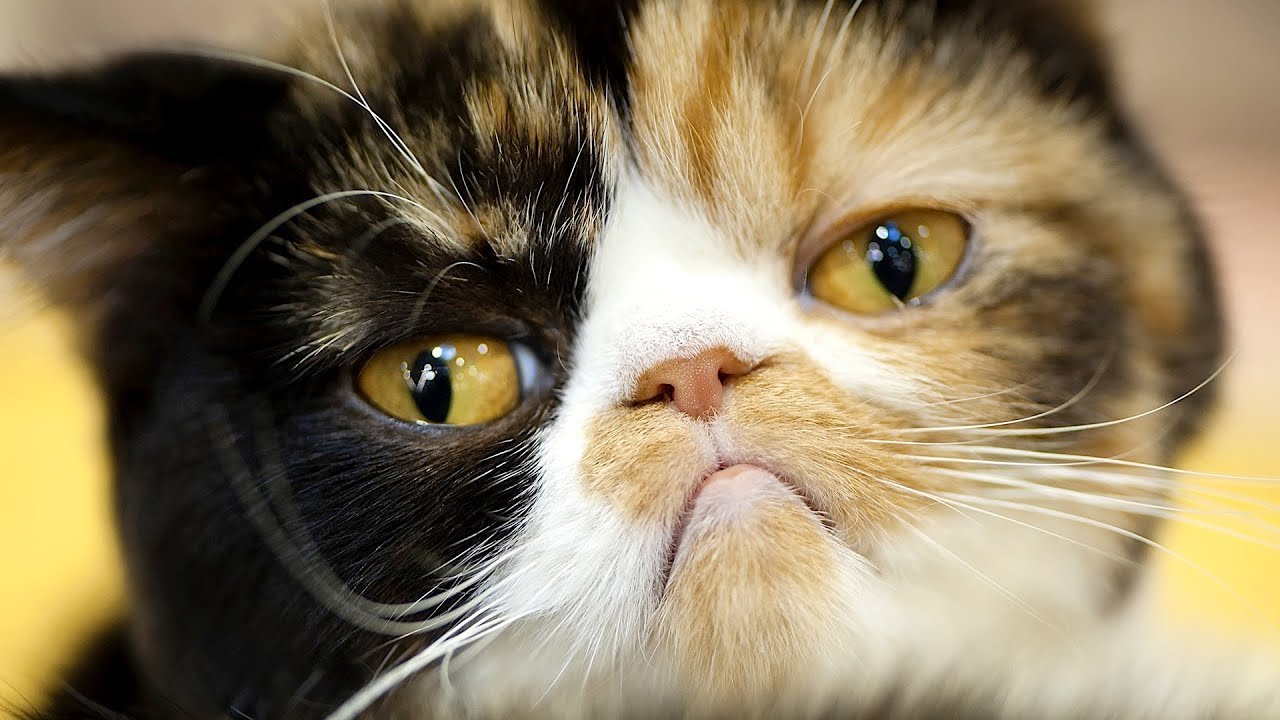
10 sick cat symptoms to watch out for
Telling a moody from a sick cat is a vital skill for the caring owner.
As we know cats can sometimes be quite temperamental. They also don’t like to admit they are sick. So it’s important to be able to tell the difference between fluffy simply having a bad day and asserting her independence and when you have a sick cat that needs your help.
The key to identifying illness in cats is to notice any CHANGES IN BEHAVIOR and routine from what your feline friend does normally.
More of one thing, less of another and things they don’t normally do.
Cats don’t lie but they will conceal a problem. This comes from their basic instinct not to let predators perceive they are weak and vulnerable. But you are not a predator. You are you’re their best friend. So learn how to spot those sick cat symptoms they are so desperately trying to conceal early and you will be doing your pet a real favour.
This list of sick cat symptoms is reproduced with permission of The American Association of Feline Practitioners.
1. Inappropriate Elimination Behaviour or Litter Box
Use Inappropriate and annoying elimination behaviors by your cat can often indicate an underlying medical condition and do not mean your cat is trying “to get back” at you. These behaviors can include urinating or defecating outside the litter box or other problems. A cat with these behaviors may have any number of conditions, including lower urinary tract disease, kidney disease, urinary tract infection and diabetes mellitus.
2. Changes in Interaction
Cats are social animals and enjoy interactions with their human family and often with other pets. Changes in those interactions may signal problems such as disease, fear and anxiety. It may also signal pain, which can cause aggression.
3. Changes in Activity
A decrease or increase in activity can be a sign of a number of conditions. Discomfort from joint disease or systemic illnesses can also lead to a decrease in activity. Increased activity is often seen with hyperthyroidism. It’s important to understand cats don’t usually slow down just because they are old.
4. Changes in Sleeping Habits
The average adult cat may spend 16 to 18 hours per day sleeping. The key to differentiating abnormal lethargy from normal napping is knowing your cat’s sleeping patterns and noting any changes.
If your cat is elderly and sleep patterns have changed you will need a visit to the vet
In my book Everything You’ve Ever Wanted To Know About Living Happily With A Cat I cover sleeping habits and what you can do to retrain your cat.
However, if she has elderly cat health problems there may be other factors like an overactive thyroid, high blood pressure, arthritis and sometimes dementia. So you should get this checked out by your vet.
5. Changes in Food and Water Consumption
Most cats are not “finicky” eaters. Look for changes, such as a decrease or increase in consumption and how the cat chews its food. Increased water intake can be an early indicator of thyroid problems, kidney disease, diabetes or other illnesses.
Discover how diet and nutrition can cause Feline Inflammatory Bowel Disease.
6. Unexplained Weight Loss or Gain
Weight changes often go unnoticed because of a cat’s thick coat. A change in weight does not necessarily correlate with a change in appetite. If your cat goes to the food dish and then backs away from it without eating, nausea may be the source. On the other hand, obesity has become a serious health concern in cats, with increased risk of diabetes mellitus, joint disease and other problems.
Discover the simple ways to track your pet cat’s weight at home and avoid any nasty health surprises.
7. Changes in Grooming
Cats are typically fastidious groomers. A decrease in grooming behavior can indicate a number of conditions, including fear, anxiety, obesity or other illnesses. An increase in grooming may be a sign of a skin problem.
Fluffy will groom excessively rather than scratch if there is an allergy so you may need to check for cat flea allergies. If you are unable to identify the issue a visit to the vet is definitely in order.
8. Signs of Stress
Your cat can feel stress despite having an “easy” life. Boredom and sudden changes are common causes of stress in cats. Stressed cats may demonstrate decreased grooming and social interaction, spend more time awake and scanning their environment, hide more, withdraw and exhibit signs of depression, and have an increased or decreased appetite.
Untreated stress can cause problems as extreme as blocked bladders requiring an operation. Discover How A Cat Bladder Infection Can Be Caused By Unresolved Anxiety.
9. Changes in vocalization
Increased vocalisation or howling is more common in older cats and is often seen with some underlying issue. Many cats also have increased vocalisation if they are in pain or anxious.
10. Bad Breath
Since dental disease is considered a silent disease, it is important to have your cat’s teeth checked to help prevent it. One early indicator of an oral problem is bad breath. Regular home teeth brushing and veterinary dental care prevent bad breath, pain, tooth loss and spread of infection to other organs.
Treat bad breath (cat halitosis) as a potential warning – not a nuisance and discover what you can do about it.
So to summarize, be sure to let your veterinarian know if you answer YES to any of the following:
- Does your cat urinate or defecate outside the litter box?
- Does your cat show signs of aggression, including hissing, biting or scratching people?
- Does your cat exhibit any fearful behaviors?
- Has there been any change in your cat’s behavior or disposition?
